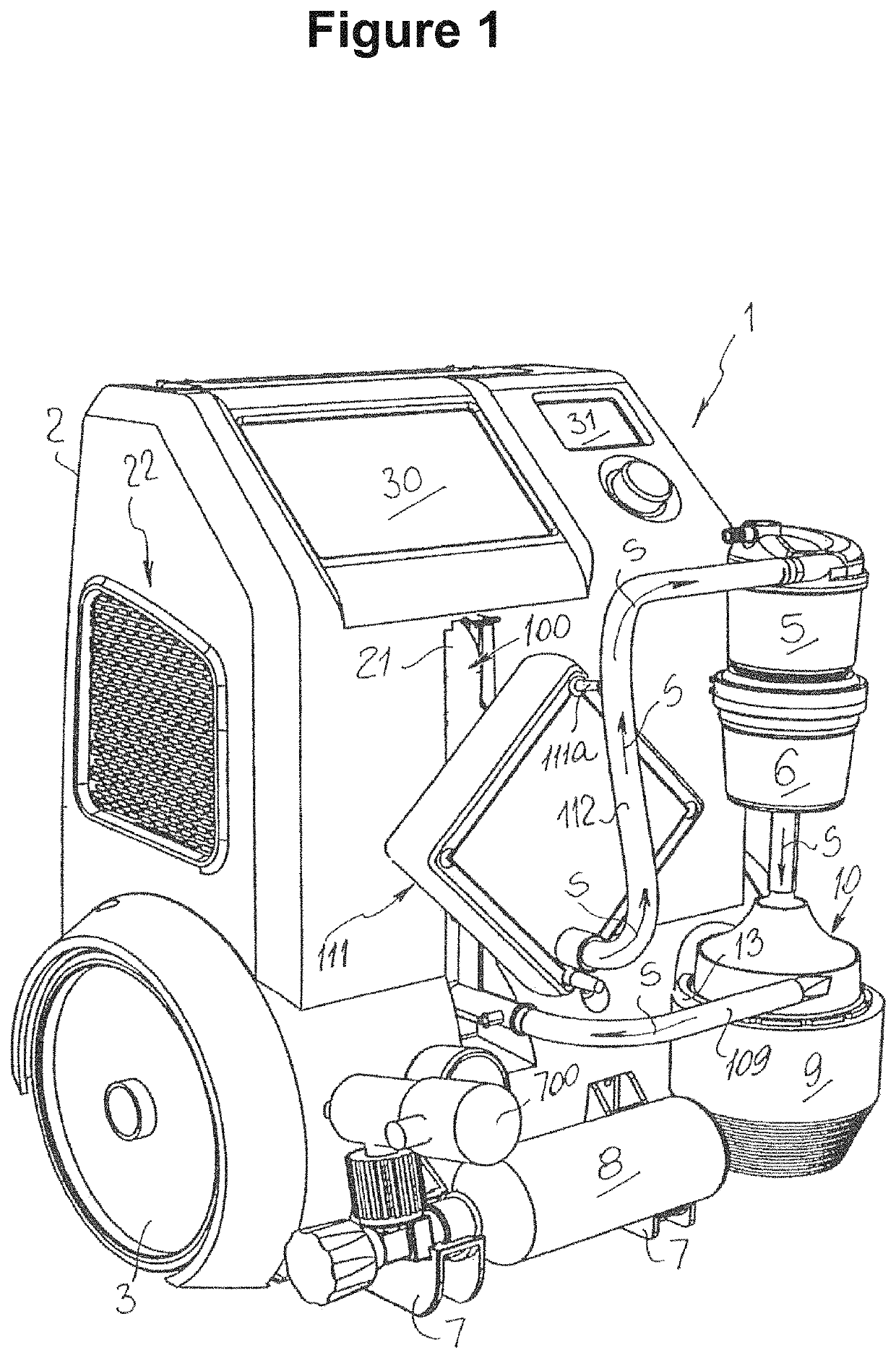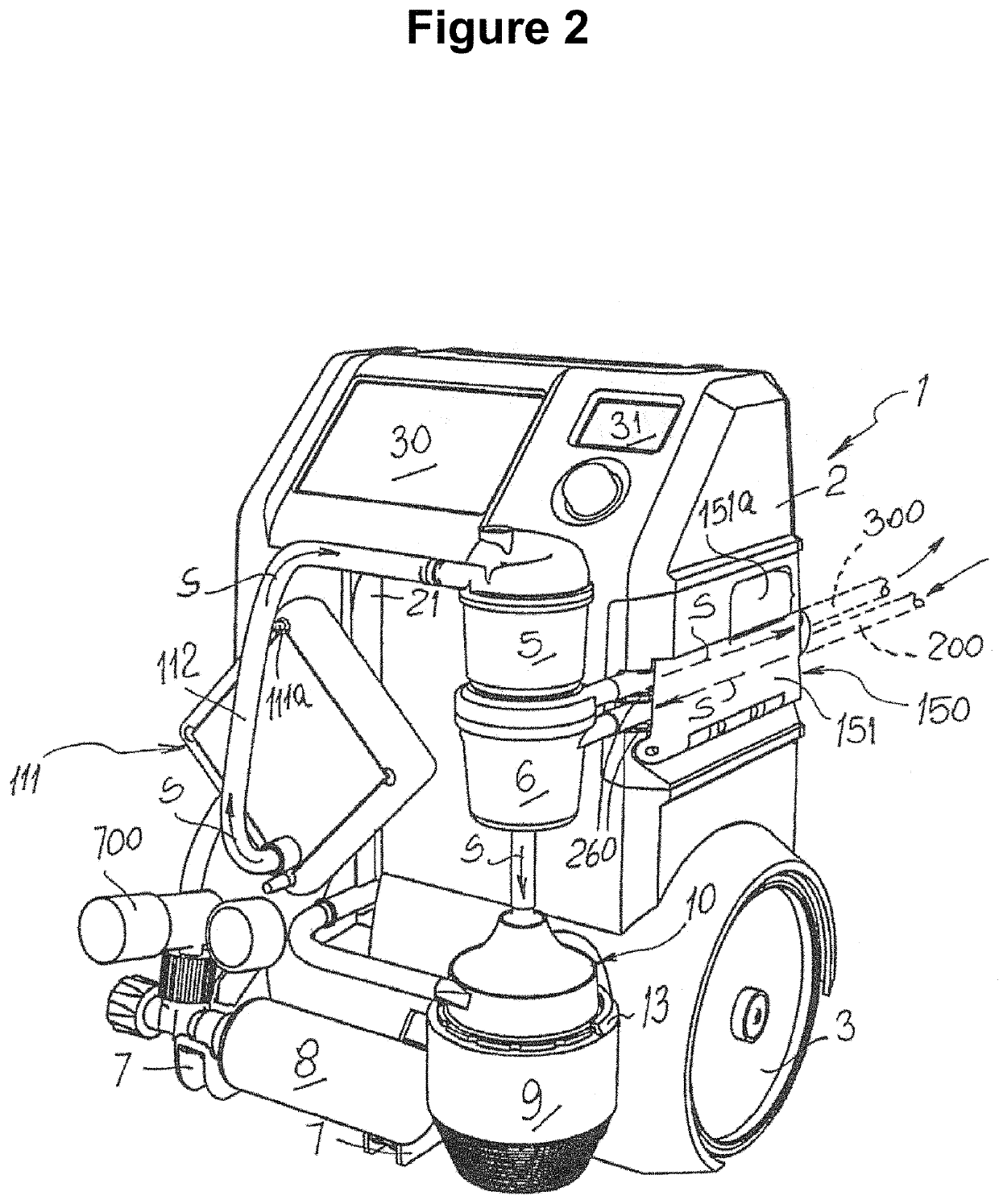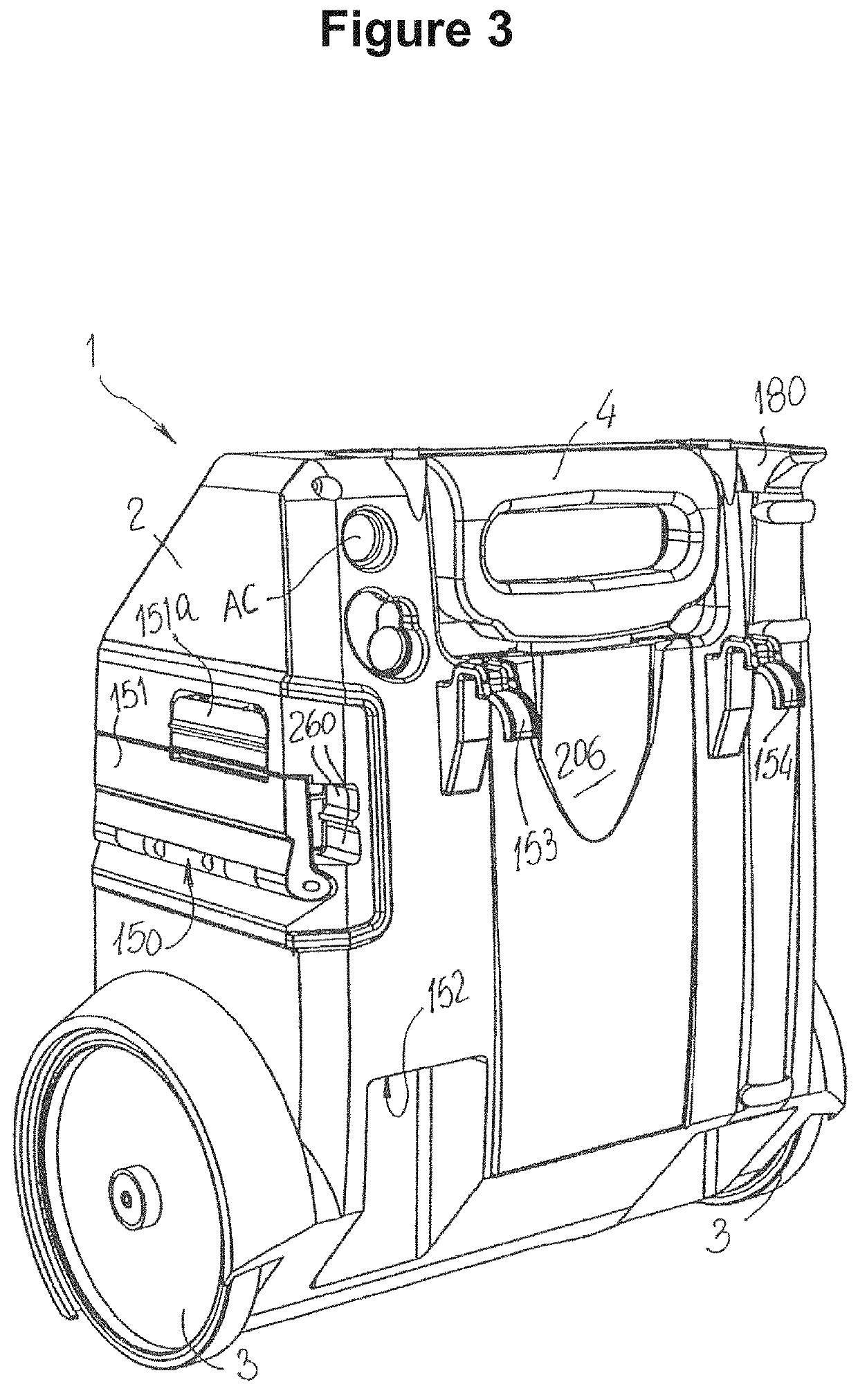Portable medical apparatus for cardiopulmonary aid to patients
a medical equipment and patient technology, applied in the field of patients' portability medical equipment, can solve the problems of increasing the likelihood of inducing errors in their use, affecting patient safety, and above described prior art suffering from certain drawbacks, and achieves the effect of reducing the overall size and quickly mounting
- Summary
- Abstract
- Description
- Claims
- Application Information
AI Technical Summary
Benefits of technology
Problems solved by technology
Method used
Image
Examples
Embodiment Construction
Referring to the figures, numeral 1 generally designates a portable medical apparatus for cardiopulmonary aid to patients, according to the invention.
The medical apparatus 1 comprises a machine body 2 which encloses, as better explained below, an extracorporeal circuit, schematically and generally referenced 500 in FIG. 4, for treating blood of a patient “P”.
The machine body 2 has a pair of wheels 3 in its lower portion, making the machine body 2 movable over a floor and, in its upper portion, an extractable handle 4, for lifting and dragging it, which is slideably held in a compartment 206 formed on the back of the machine body 2.
A slot 21, here having a vertical orientation, is formed on the front part of the machine body, for receiving a heat exchanger 100 (see also FIG. 5).
Referring in particular to FIG. 5, the heat exchanger 100 has a flat shape. The blood enters the heat exchanger 100 through the inlet port 104 and as it flows from the bottom to the top, it enters in contact w...
PUM
 Login to View More
Login to View More Abstract
Description
Claims
Application Information
 Login to View More
Login to View More - R&D
- Intellectual Property
- Life Sciences
- Materials
- Tech Scout
- Unparalleled Data Quality
- Higher Quality Content
- 60% Fewer Hallucinations
Browse by: Latest US Patents, China's latest patents, Technical Efficacy Thesaurus, Application Domain, Technology Topic, Popular Technical Reports.
© 2025 PatSnap. All rights reserved.Legal|Privacy policy|Modern Slavery Act Transparency Statement|Sitemap|About US| Contact US: help@patsnap.com



